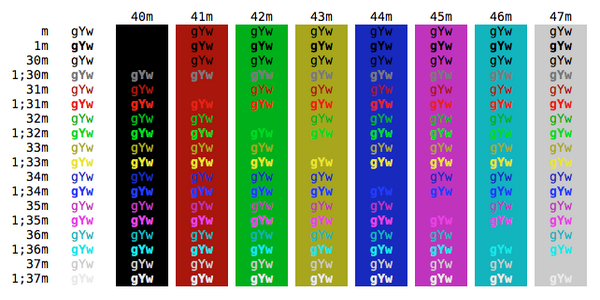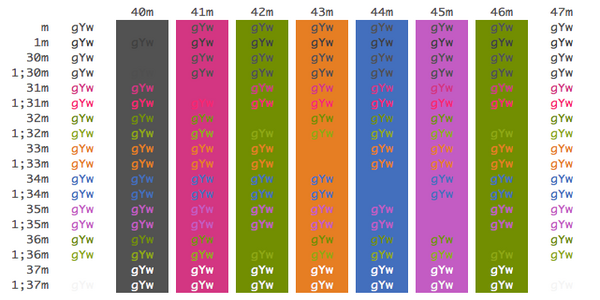

- #Best iterm color schemes mac os#
- #Best iterm color schemes full#
- #Best iterm color schemes windows#
If you only use English or western european languages, you probably only need to set the font for ASCII characters. What should I do?Ī: iTerm2 lets you to specify two fonts. If something goes wrong, you can try deleting this file and iTerm2 will generate a new settings file that should always work. Try using "telnet -8 yourhost" in your command.Ī: Preferences, including profiles and bookmarks are stored in ~/Library/Preferences/. If you are running a telnet session, be sure you turned on the 8-bit data path. To enable inputing unicode characters in your shell, put this in your ~/.inputrc

#Best iterm color schemes mac os#
If you are running a local session, unicode is the standard of Mac OS X. For example, there are several encoding standards for Chinese, you need to know which one is used on your system. Q: I can't input Chinese/Japanese/Umlauts/Accents, why?Ī: First of all, make sure your encoding settings is correct. If everything else fails, you can fire up another terminal program that works for you, check the escape sequences generated by arrow keys in those program, and go back to iTerm2, type these key sequences in your keyboard profile. In some system, vi by default works in the original vi mode, which does not support arrow keys. And lastly, check if you have set up your console application correctly. These settings will override the default behavior.

Secondly, check if there's any customized key bindings for these keys. Scripts like bashrc may change the terminal type and create some problem. The terminal type set in the terminal profile should match the TERM variable in your session environment. In any case, if your keys are not working, first check if iTerm2 is set to correct terminal type.
#Best iterm color schemes full#
Termcap and terminfo are written for full screen applications, so they will report the cursor application mode sequences. Full screen applications such as vi and emacs usually use cursor application mode. Most shells are good with the normal mode. These two modes are respected by many console programs. For the cursor application mode, iTerm2 generates ESC O sequences. For the normal mode, iTerm2 generates ESC [ sequences. The escape sequences generated by these keys depend on if your session is in the normal mode or the cursor application mode. Q: Why my arrow/HOME/END keys are not working?Ī: When the terminal type of your sessions is set to one of those "xterm" types, iTerm2 handles the arrow keys, the home key, and the end key in a special way. Turning off blur can improve performance dramatically for users with older computers. If you have turned on adjustable font thickness for anti-alised text, turn that off. Using a solid color instead of a background image helps. Disabling transparency and anti-aliasing helps a little. Q: How can I improve iTerm2's performance?Ī: Make sure you are running the latest version. Try running this command in bash to see the difference between the two behaviours: Q: I don't like the way that iTerm2 renders bold fonts.Ī: Go to Preferences->Bookmarks->Display and change the "Draw bold text in bold font" and "Draw bold text in bright colors" settings.
#Best iterm color schemes windows#
Namely it doesn't work at all on some older Macs (eg, PowerPC iBook G4s), also on Snow Leopard it causes windows to disappear during expose. Unfortunately Apple has yet to create a public API for this functionality, and the undocument API we use at the moment has glitches. Q: I get blank windows, or transparent windows in Exposé.Ī: Try turning off blur in your terminals.


 0 kommentar(er)
0 kommentar(er)
